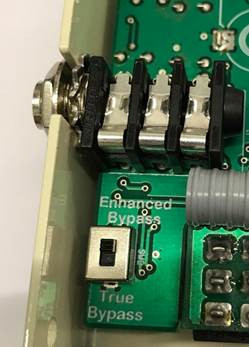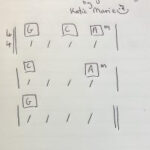The Fulltone OCD (Obsessive Compulsive Drive) has long been celebrated in the guitar community for its touch-sensitive response and amp-like overdrive. Since its inception in 2004, the OCD has seen subtle refinements, often leading to misinterpretations about “versions.” However, the core of the OCD has remained consistent, evolving through minor iterations from V1.0 to V1.8. Pedals with serial numbers 205811 and onwards represent a significant update, often referred to by players as “v2.01” or simply the OCD V2, featuring a less compressed and more dynamic character. This article dives into what makes the OCD V2 a standout overdrive guitar pedal.
The Enduring Essence of the OCD Pedal
Despite the updates, the fundamental aspects that define the OCD’s unique sonic signature remain. From the beginning, the OCD distinguished itself by being the first pedal to utilize MOSFETs as clipping diodes. Furthermore, Fulltone pioneered a “hard clippers connected to v-ref” configuration, deviating from the common practice of connecting them to ground. These innovations are crucial to the OCD’s exceptional touch sensitivity. This design allows the pedal to react dynamically to a player’s picking nuances, responding distinctly to both gentle and aggressive playing. This is what sets the OCD apart from many other overdrive pedals on the market, a significant portion of which are variations on the classic Tube Screamer circuit.
New Features Enhancing the OCD V2 Experience
The OCD V2 introduces several key enhancements designed to elevate its performance and versatility in modern guitar setups:
Output Buffer: Maintaining Signal Integrity
A significant new feature is the inclusion of an output buffer. This buffer is engaged when the pedal is on in True-Bypass mode, or constantly active in Enhanced Bypass mode. This addition is crucial for maintaining signal integrity in complex pedalboards. In today’s elaborate signal chains, where multiple pedals and long cable runs are common, signal degradation can be a significant issue. The output buffer in the OCD V2 isolates it from the effects that follow in the signal chain, ensuring that your tone remains consistent regardless of its position in your pedalboard or within loopers. Beyond signal preservation, this buffer also positively influences the pedal’s sound, reducing load on the hard-clipping stage, which translates to increased sustain for both notes and their harmonic overtones.
Class A JFET Input: Increased Dynamics and Responsiveness
The OCD V2 now boasts a Class A configured discrete 2N5457 JFET input section. This upgrade significantly raises the input impedance to 1 mega ohms, a substantial increase from the previous 330K. The higher input impedance dramatically improves the pedal’s dynamics, resulting in a more interactive and responsive feel. This enhancement is particularly beneficial for both single-coil and humbucker pickups, allowing the nuances of each pickup type to shine through with greater clarity and expression.
Enhanced Bypass vs. True Bypass: Choosing Your Ideal Signal Path
Another groundbreaking feature of the OCD V2 is an internal switch that allows users to select between Enhanced Bypass (EB) and True-Bypass. Importantly, Fulltone has engineered this switching to be pop-free in either mode. Enhanced Bypass is a Fulltone innovation, addressing the limitations of traditional bypass methods in complex pedalboards.
 Fulltone OCD V2 Enhanced Bypass Options
Fulltone OCD V2 Enhanced Bypass Options
The Challenges of True Bypass in Modern Pedalboards
While True-Bypass (TB) was once considered the gold standard for preserving a clean signal path, the landscape of guitar effects has evolved. Today, many guitarists utilize extensive pedalboards, often incorporating ten or more pedals. This complexity introduces a significant potential for signal and tone loss due to the cumulative effect of numerous cables, connectors, and pedal circuits in the chain. The result can be a noticeable degradation of the guitar’s natural tone, diminishing the direct, inspiring sound achieved when plugging straight into a high-quality tube amplifier.
Traditional Buffered Bypass: A 40-Year-Old Solution with Drawbacks
For the past four decades, the pedal industry’s answer to signal loss has been unity-gain buffered bypass. This approach, commonly employed by brands like Boss and Ibanez, utilizes Field Effect Transistors (FETs) configured as unity-gain buffers.
Benefits of Unity-Gain FET Buffered Bypass
Unity-gain FET buffered bypass effectively mitigates the signal loading caused by long cable runs. It also eliminates the undesirable “popping” sound often associated with switching pedals on and off.
The Hidden Issue: Tone and Dynamic Loss
Despite its benefits, unity-gain FET buffered bypass isn’t without its drawbacks. While perceived as a transparent solution, closer examination reveals subtle but significant tonal alterations. Through rigorous testing with advanced equipment, it has been documented that each unity-gain FET buffer can actually reduce gain by 0.3 to 0.6 dB. This gain reduction primarily affects the low-mid and bass frequencies, resulting in a “tinny” sound as the higher frequencies become more prominent while the lower frequencies are attenuated. Considering that two FETs are typically required per pedal to buffer the input and output paths, the cumulative loss can be between 1dB and 2dB per pedal in bypass.
The More Critical Issue: Dynamic Pick Response Degradation
Even more concerning than the slight tonal shift is the impact of traditional unity-gain FET bypass on dynamic pick response. It diminishes the nuanced difference between soft and hard picking – even when the pedal is bypassed! This dynamic compression is a significant compromise for expressive players. While this effect has been recognized anecdotally by discerning guitarists, it is now quantifiable and visible on oscilloscopes.
Enhanced Bypass: The Fulltone Solution for Uncompromised Dynamics
Fulltone’s answer to these bypass limitations is Enhanced Bypass. By configuring the switching FETs in Class A, Fulltone has restored and even enhanced the dynamic responsiveness of the signal. Class A operation, even with a minimal gain of 0.3 to 0.6 dB, amplifies the dynamics, providing a wider expressive range than a direct guitar-to-amp connection.
The magic of Class A FET preamps is well-known and often cited as the reason for the revered tone of vintage EP-3 Echoplexes and similar boosters. Guitarists intuitively appreciate the sonic enhancement these units provide, even if they can’t pinpoint the technical reasons. However, classic EP-3 preamps introduce their own colorations, including out-of-phase signals, treble boost, and bass cut. Fulltone’s Enhanced Bypass delivers the dynamic benefits of Class A operation without altering the signal phase or EQ.
With the OCD V2’s Enhanced Bypass, this dynamic enhancement is present whether the pedal is engaged or bypassed. Simply having the OCD V2 in your signal chain, even when off, can revitalize your entire rig, injecting vibrancy and power back into your tone.
Experience the Difference: OCD V2
Is the difference between traditional bypass and Enhanced Bypass significant? Fulltone encourages guitarists to experience the OCD V2 firsthand at their local dealer and judge for themselves. The OCD V2 is available now, ready to redefine your overdrive experience and breathe new life into your pedalboard.

